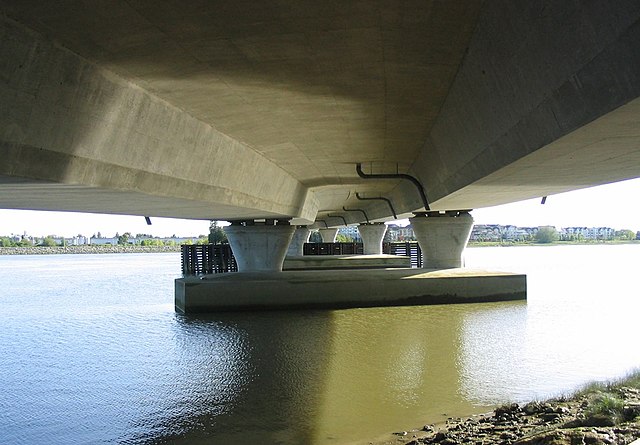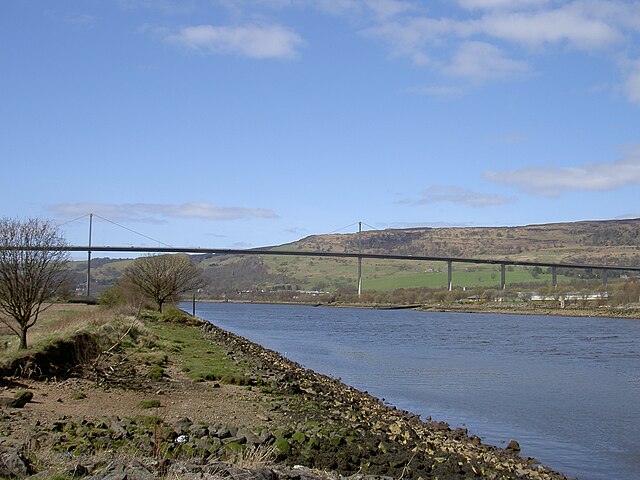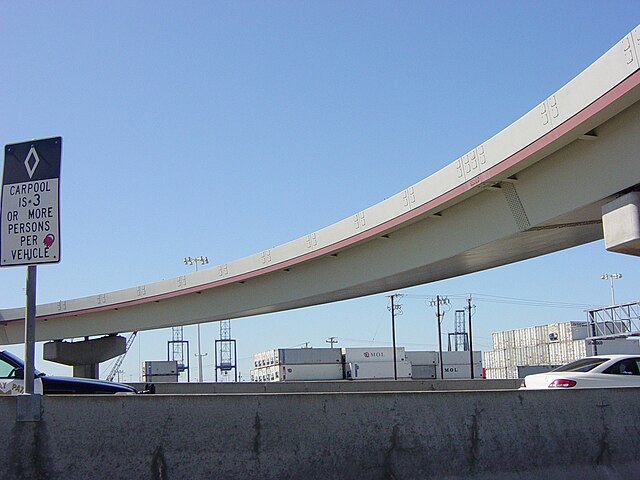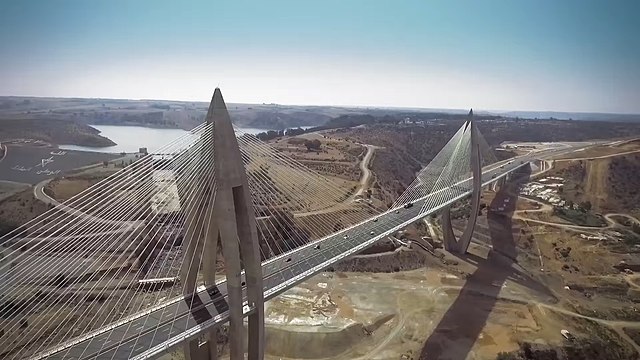A box girder bridge, or box section bridge, is a bridge in which the main beams comprise girders in the shape of a hollow box. The box girder normally comprises prestressed concrete, structural steel, or a composite of steel and reinforced concrete. The box is typically rectangular or trapezoidal in cross-section. Box girder bridges are commonly used for highway flyovers and for modern elevated structures of light rail transport. Although the box girder bridge is normally a form of beam bridge, box girders may also be used on cable-stayed and other bridges.
Underneath the No. 2 Road Bridge in Richmond, British Columbia, Canada
Erskine Bridge, near Glasgow, Scotland.
Single box girder bridge (concrete), Australia. A similar bridge on this river was fabricated ashore and pushed across its pylons.
Single box girder bridge (steel), flyover above eastern approach of the San Francisco–Oakland Bay Bridge.
A bridge is a structure built to span a physical obstacle without blocking the way underneath. It is constructed for the purpose of providing passage over the obstacle, which is usually something that is otherwise difficult or impossible to cross. There are many different designs of bridges, each serving a particular purpose and applicable to different situations. Designs of bridges vary depending on factors such as the function of the bridge, the nature of the terrain where the bridge is constructed and anchored, the material used to make it, and the funds available to build it.
A temporary wooden footbridge leading to Luang Prabang in Laos
The covered bridge in West Montrose, Ontario, Canada
The Albertus L. Meyers Bridge in Allentown, Pennsylvania, U.S., "one of the earliest surviving examples of monumental, reinforced concrete construction," according to the American Society of Civil Engineers.
Mohammed VI Bridge in Morocco








